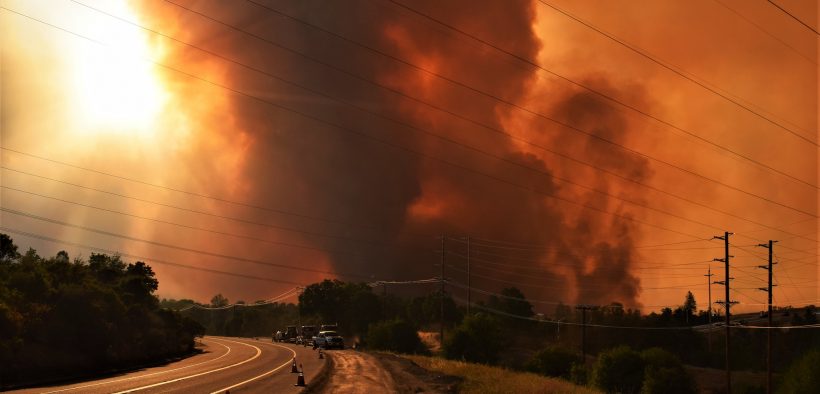PG&E’s Forced Power Outage Reveals Flaws in Archaic Power System

Environmentalists and other proponents of utility reform argue the forced outage is a sign that California should replace PG&E and invest in safer, renewable infrastructure.
Pacific Gas & Electric cut power to around 800,000 California residents in parts of 22 counties in a preemptive effort to avoid sparking a wildfire in the face of hot, windy, and dry weather. The utility company has faced fierce criticism for forcing the record power outage on California citizens, with public officials blaming the company for a series of failures that have led to what Sumeet Singh, head of the utility’s Community Wildfire Safety Program, calls “a last resort.”
“None of us are happy about this,” said California Governor Gavin Newsom. “We have an antiquated system at PG&E that needs to be upgraded.”
PG&E Liable for California Fires
PG&E declared bankruptcy in January in response to billions in potential liabilities for its role in numerous California fires. Investigators determined in March that PG&E’s faulty equipment started the 2018 Camp fire, which killed 129 people and devastated tens of thousands of home.
As Citizen Truth’s Leighanna Shirey wrote in January, “Cal Fire, California’s fire agency, established last June that PG&E equipment caused 17 of the wildfires that spread across Northern California in 2017. Cal Fire referred its findings for 12 of those fires to various county District Attorneys’ offices, citing possible state law violations.”
Investigators found some of these fires to have been caused by trees falling on power lines, drawing the condemnation of local, state, and federal officials, who say PG&E failed in its responsibility to cut trees in close proximity to lines.
In April, North California District Judge William Alsup slammed PG&E for focusing on profits while failing to provide precautionary maintenance work.
“PG&E pumped out $4.5 billion in dividends and let the tree budget wither,” Judge Alsup said.
Judge Alsup ordered new federal oversight to perform random inspections on PG&E’s tree-cutting program, threatening another hearing if the utility company failed to cut the right trees.
“There’s a lot of trees out there, and we don’t have eyes on all of them,” PG&E attorney Reid Schar replied, arguing Alsup’s demand was unrealistic.
“That’s a problem of your own making,” Alsup responded. “A lot of money went to dividends that should’ve gone to your trees. Get square with the people of California, who depend on you to do the job safely.”
Is the Forced Power Outage a Sign of an Outdated PG&E?
Environmentalists and other proponents of utility reform argue the forced outage is a sign that California should replace PG&E and invest in safer, renewable infrastructure.
“PG&E should be held to higher standards than this,” Mindy Spatt, a spokeswoman for the Utility Reform Network, told the Guardian. “No one wants to see another fire like the fires we’ve seen in the past, but we have to remember that the problem that these shutoffs are hopefully going to address are PG&E’s negligence and incompetence, and PG&E’s propensity to ignite fires.”
“Consumers would rather have their power shut off than have their homes and businesses burnt down, but they would also rather have a utility that didn’t start fires,” Spatt said.
The San Francisco Chronicle reports that thousands of disabled and sick PG&E customers were alarmed by news of the preemptive blackout. While hospitals will remain functioning and PG&E will operate an assistance program for vulnerable customers, many disabled or sick people will go without energy during the outage.
“There are some very vulnerable people out in the community who probably don’t have the financial means to be able to just purchase a generator,” Napa county resident and disability rights advocate Gina Biter-Mundt told the Chronicle. “I’m concerned those people that really are dependent on power, especially for oxygen to be able to breathe.”
The Guardian’s Vivian Ho writes that the preemptive shutoffs will become the new norm as climate change continues to increase weather extremes.
“There’s got to be a better solution than what were doing,” Michael Zuccolillo, a town councilor in Paradise, a county that was devastated by the 2018 Camp fire, told the Guardian. “You can’t tell the public we’re building a great fire-resistant system and then turn it off when there’s a 20mph wind … It sounds like something that would happen in the 1900s.”















